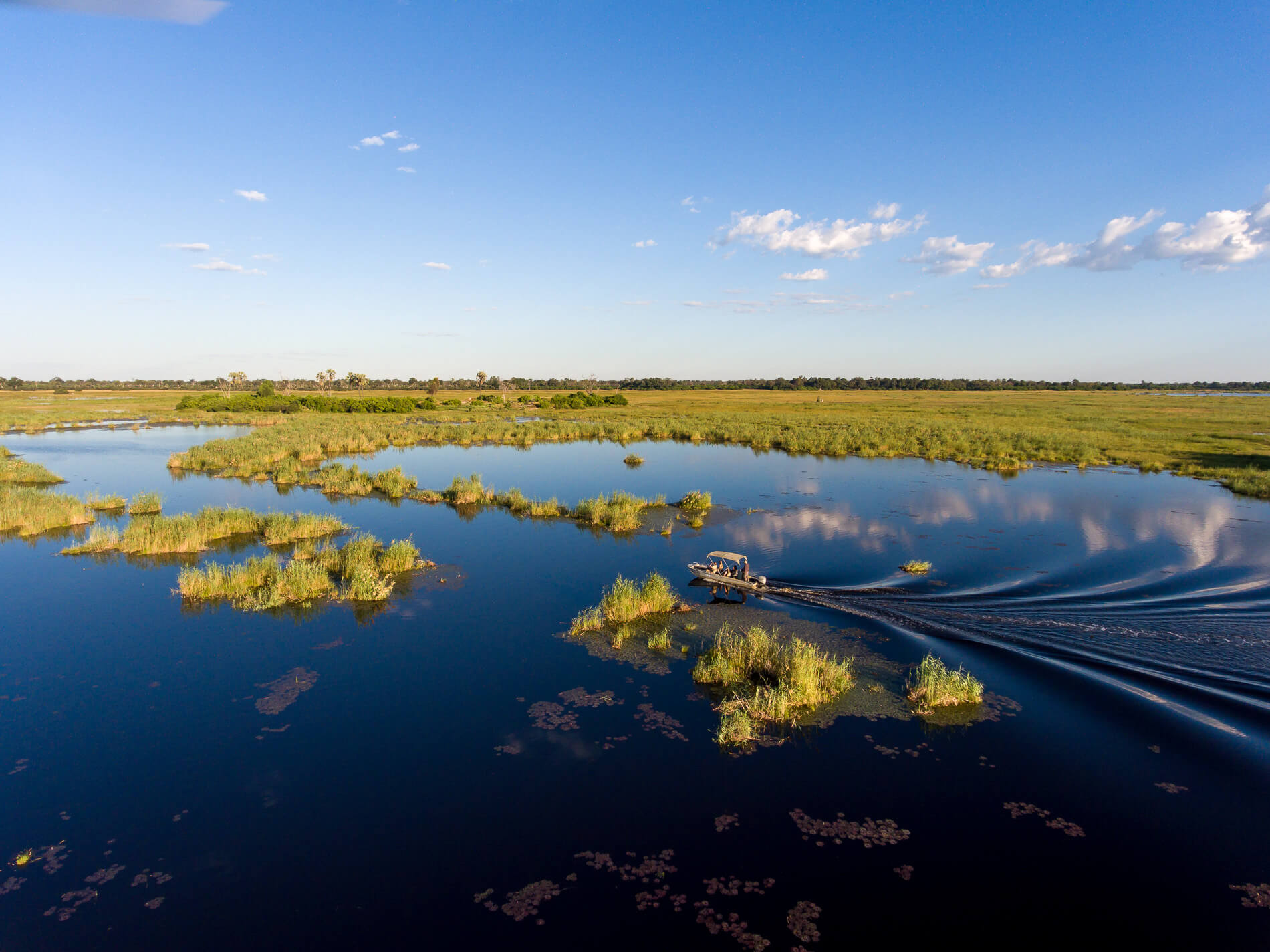The Linyanti Wildlife Reserve includes around two-thirds of the Savuti Channel, sometimes called ‘the stolen river’. This important, life-giving water source has flowed and dried up unpredictably for over a hundred years, and while it has been flowing since 2008, after a dry spell of nearly 30 years, it’s anyone’s guess when another tectonic shift might cause it to dry.
On the weekend of the 16th and 17th June, ichthyologist Professor Paul Skelton joined the Wilderness conservation team, as well as guides from Wilderness Savuti and DumaTau, for an informative weekend of fishing on the Savute and Linyanti Channels.

Catch-and-release fishing was conducted by boat as well splashing about in the shallows with hand nets. Whilst the anglers were mostly disappointed, some 12 species of fish were caught in the nets.
The catch of the day went to conservation biologist, Kylie McQualter, who caught a Cuando dwarf stonebasher (Pollimyrus cuandoensis), a species only recently described in 2013. The stonebasher belongs to a family of fish known to communicate by means of weak electric pulses, with each species having its own unique electrical discharge.
Paul was in Maun presenting his newly released book Fishes of the Okavango Delta & Chobe River, Botswana and sharing his knowledge with local guides and fishermen. Paul also highlighted his work with the Okavango Wilderness Project, hitting home the message of how important it is to conserve the head waters of the Okavango in Angola while creating sustainable tourism opportunities in the region.
Many thanks to Prof. Paul for the knowledge shared – we look forward to learning more and working together on future conservation projects.
Hundreds of miles from so-called civilisation, the Linyanti is a pristine wilderness area. Expansive grasslands, floodplains and mopane woodlands make this place where the Linyanti River meets the Savuti Channel one of Botswana’s most diverse habitats and a haven for wildlife.


